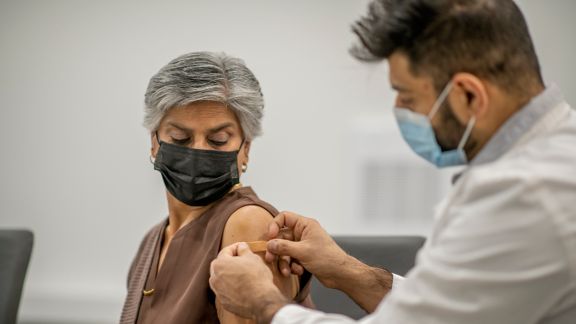The Impact of Medicaid Redeterminations on Dual-Eligible Individuals

Problem
No one knew how Medicaid unwinding was affecting 9.4 million dual enrollees in Medicare and Medicaid.
During the COVID-19 pandemic, states received enhanced federal funding to keep Medicaid beneficiaries continuously enrolled. However, starting in April 2023, states began unwinding continuous enrollment and redetermining the Medicaid eligibility of all enrollees. The 9.4 million Americans who were dually enrolled in Medicaid and Medicare at the beginning of the redeterminations period—known as dual eligibles—were particularly vulnerable to disruptions in Medicaid coverage due to high medical needs and related costs. This put millions of duals at risk of losing access to Medicaid services not covered by Medicare—including home and community-based services such as long-term nursing care—which could lead to high out-of-pocket costs and barriers to care.
Despite these threats, there were limited data on the potential impact on duals and other vulnerable Medicaid populations.
Solution
NORC conducted the first ever data analysis of Medicaid unwinding’s impact on dual eligibles.
Our data analyses were the first to publicly examine the impact of Medicaid redeterminations on individuals with both Medicare and full Medicaid coverage. To understand the potential effects on dual eligibles, we studied Medicare enrollment data from the Centers for Medicare & Medicaid Services Master Beneficiary Services File for April 2023 through June 2024. Our analysis looked at coverage loss for dual eligibles and examined the extent to which those who lost their Medicaid status during the unwinding period returned to Medicaid during the study period, a concept known as churn.
Result
Over 1.6 million dual eligibles experienced coverage loss during the redetermination period.
Our groundbreaking analysis revealed that:
- Over 1.6 million dual eligibles lost full Medicaid coverage since the unwinding period began in April 2023.
- This represents over 17 percent of full duals enrolled prior to the beginning of the unwinding process.
- The percent of dual eligibles experiencing coverage loss varies by state, ranging from 6 percent in New York and Alabama to 53 percent in Utah. By comparison, 27 percent of the full Medicaid population (including dual eligibles) lost Medicaid coverage during the same time period.
- So far during the redeterminations period, 2.1 percent of duals who lost coverage have re-enrolled in Medicaid (also known as churn).
- The percent of dual eligibles who lost coverage experiencing churn varies by state, ranging from less than 1 percent in Alabama to approximately 6 percent in North Dakota and Utah.
- Historically, most churn for dual eligibles has been for administrative reasons (meaning they could still be eligible for coverage). A low churn rate combined with high administrative disenrollments could mean eligible individuals remain disenrolled.
These unique data help provide important insights for states and policymakers into how dual eligibles fared during Medicaid unwinding, impacting future policy and operational decisions about Medicaid enrollment.







